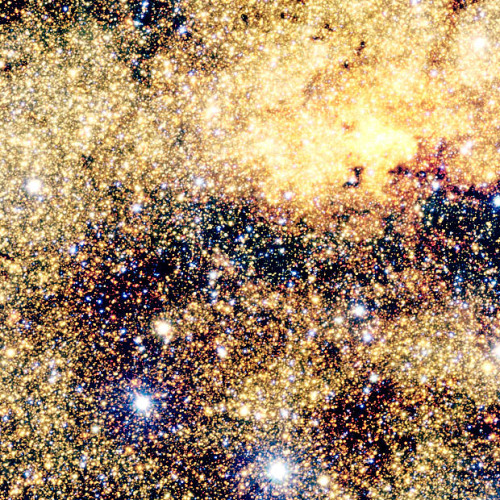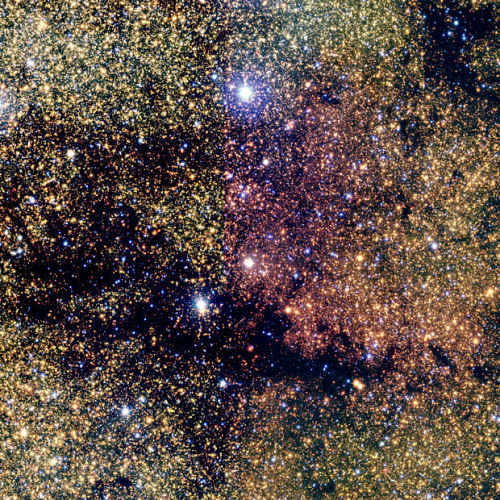A Personal Update
A Personal Update
Hello everyone! This is just a quick behind-the-blog update from me.
I’ve been applying to NASA internships for the past three months, and I’m sad to say that I was not chosen for any of them.
I must admit it broke my heart a little bit to see the positions I applied for fill up with no offer extended to me. I really thought I had a good shot at a few of them this time around. I really thought I had a chance.
I’m writing this because I want everyone to know that is natural to feel frustrated and disappointed, and that whatever setback you may encounter is not the end of the world. Just as there are countless stars in the night sky, there are just as many opportunities still waiting for you to find them.
Yes, my heart is heavy from this, but I know I’ll bounce right back. Rejection is a part of life, after all, and no one ever made it to the stars after giving up because of a few rejections.
I’m going to keep moving forward, with my eyes on the stars, doing what I love to do, and I know I’ll get where I want to be someday.
Until then, ad astra!

More Posts from Catchconstellations-blog and Others
Meet Our 7 Newest Planetary Neighbors
On Wednesday, February 22, NASA took the whole world by storm when they announced the incredible discovery of 7 Earth-sized exoplanets – all of which could potentially have the right conditions for life to exist!
While there has been a relatively continuous stream of newly found exoplanets in the past years, this exoplanet system, named TRAPPIST-1 for the Chile-based telescope that first discovered the planets back in May, is particularly special because of three main reasons:
1.) They are considered relatively close (40 light years/235 trillion miles) to Earth.
2.) They are the first known system of Earth-sized planets that orbit a single parent star, with 3 planets located in the “Goldilocks zone”, the astrophysical orbit that has just the right conditions for allowing liquid water, and by extension, life, to exist. While all 7 could have liquid water, these 3 have the highest chances.
3.) Their parent star, an ultra-cool dwarf, has temperatures so low that liquid water can exist on the planets closest to it; what’s more, the planets are so incredibly close to their parent star – all 7 are closer to their parent star than Mercury is to our own Sun – that someone standing on the surface of each planet could potentially see the physical features of the other planets.
The implications of this find is mind-blowing: at the moment, Earth is the only planet we know that exists with liquid water in our solar system’s Goldilocks zone. We have no other suitable planet we can use for comparison, which is why the search for life in outer space can seem futile. But this discovery of 7 whole Earth-sized planets with the right conditions for water and life to flourish sparks the age-old question into overdrive – are we alone in the universe or not?
Earth is no longer the potentially only life-sustaining planet; we have 7 exoplanets, 3 in the Goldilocks zone, that can harbor water and life. That just blows my mind, and while I have often lamented in the past that I was born too late for traveling the world and too early for exploring space, I am grateful to be alive in this time of immense space-science discovery.
But what next? We’ve discovered this new system, what are we going to do about it? According to NASA, a new telescope called the James Webb Space Telescope will be launched in 2018. Equipped with state-of-the-art technological capabilities such as increased sensitivity sensors, it will be able to detect chemical signals present in a planet’s atmosphere such as methane, oxygen, and water. And hopefully, it will tell us more about our 7 new neighbors – and what could be on them.


Milky Way Shows 84 Million Stars in 9 Billion Pixels
Side Note: The two images shown above are mere crop outs from ESA’s recent hit: The 9 Billion Pixel Image of 84 Million Stars. These two focus on the bright center of the image for the purpose of highlighting what a peak at 84,000,000 stars looks like.
Astronomers at the European Southern Observatory’s Paranal Observatory in Chile have released a breathtaking new photograph showing the central area of our Milky Way galaxy. The photograph shows a whopping 84 million stars in an image measuring 108500×81500, which contains nearly 9 billion pixels.
It’s actually a composite of thousands of individual photographs shot with the observatory’s VISTA survey telescope, the same camera that captured the amazing 55-hour exposure. Three different infrared filters were used to capture the different details present in the final image.
The VISTA’s camera is sensitive to infrared light, which allows its vision to pierce through much of the space dust that blocks the view of ordinary optical telescope/camera systems.
source

A 2015 documentary on the history of space, the current progress of space exploration, and where we might go in the future.
If you have around an hour to spare, and a space itch to scratch, this is an awesome documentary to watch! It has very good scientific support, fantastic HD visuals, and exciting narration. It really opens your eyes to how much we’ve discovered only recently, and also how much we still don’t know. Great documentary!
Exploration is wired into our brains. If we can see the horizon, we want to know what’s beyond.
Buzz Aldrin

(via A Knight's Mission to Mars)
Hey everyone! I recently had the opportunity to work on and publish an article about student opportunities in the space industry in the University of Central Florida’s student-run publication Imprint. Please feel free to check out my article and see the other awesome work Imprint has!
Extraterrestrial Life May Be Closer Than We Think
Just when we think we have the universe somewhat figured out, it throws us a massive curveball from our very own backyard. Hold on to your telescopes, everyone, because one of our own planetary neighbors right around the corner may have the right conditions for extraterrestrial life.
On April 14, a paper published in Science Mag pointed out biochemical signatures of hydrogen production in the hydrothermal reactions in the form of plumes that erupt from the ice surface of Enceladus, one of Saturn’s moons. Molecular hydrogen is one of the building blocks of life because it is the ideal food source for microbes and bacteria, which are at the forefront of every food and energy chain (at least on Earth). This implies that the ocean beneath the ice has enough chemical activity and organic matter to maintain the right conditions to sustain life, at least on the molecular level. This kind of chemistry can indicate habitable zones in Enceladus’ ocean.
To provide a bit of a context from here on Earth: our own oceans contain deep-sea hydrothermal vents that are home to complex and important ecosystems that allow microorganisms to live and grow by using energy from the minerals produced by these vents. These microorganisms are necessary for food and energy chains to form since larger organisms feed on these microorganisms and create entire ecological communities. Many scientists have pointed out these kinds of superheated environments as prime locations for life to begin.
But having the right conditions for life doesn’t mean already harboring life. There is still a lot that we don’t know about what’s going on below the surface of Enceladus. While scientists have known about its ocean since 2005, it is only now that technology has improved to the point where it can pick up sensitive biochemical signatures and provide a more detailed picture of Saturn’s icy moon.
Recently, NASA has announced a mission called Europa Clipper that will explore Europa, another one of Jupiter’s icy moons with an ocean. It will launch sometime in the 2020s. Perhaps NASA will consider stopping by Enceladus...who knows what we can find there?
Really interesting to see a space-centric blog that isn't just pretty pictures of stars without any context. Your analyses and explanations of ongoing news aren't bad at all, so keep up the good work.
Thank you so much! I do my best to make sure my entries have good content, so I’m happy to know that you’re enjoying them!
CONSTELLATION: (noun) Group of stars that form a recognizable pattern to which a mythological or earth-based name is assigned Pattern of stars whose name or is associated with different stories and meanings Story told by stars connected across the infinite night sky, overlapping with countless other stories that have unfolded from ancient supernovas, whose imaginary lines urge our eyes up from the chaos of the world around us to the unknown vastness in which we are but a speck of dust -------- Hi! I’m a starry-eyed astrogeek named Dianne who loves absolutely everything that has to do with the stars and outer space. When I’m not studying or preparing to take over NASA one day, you can find me trying to stargaze despite city lights or happily planning my next road trip.
35 posts









